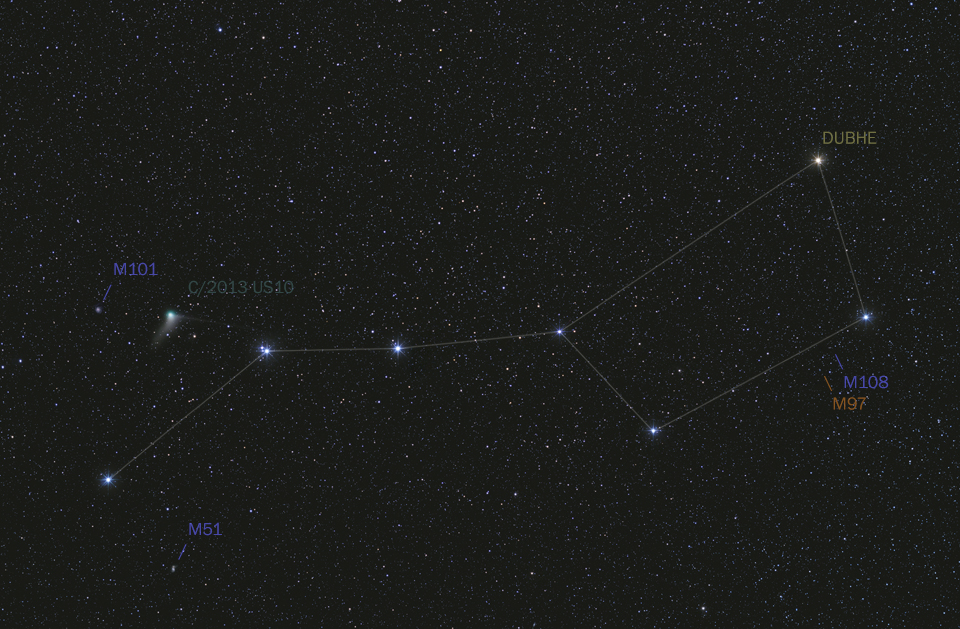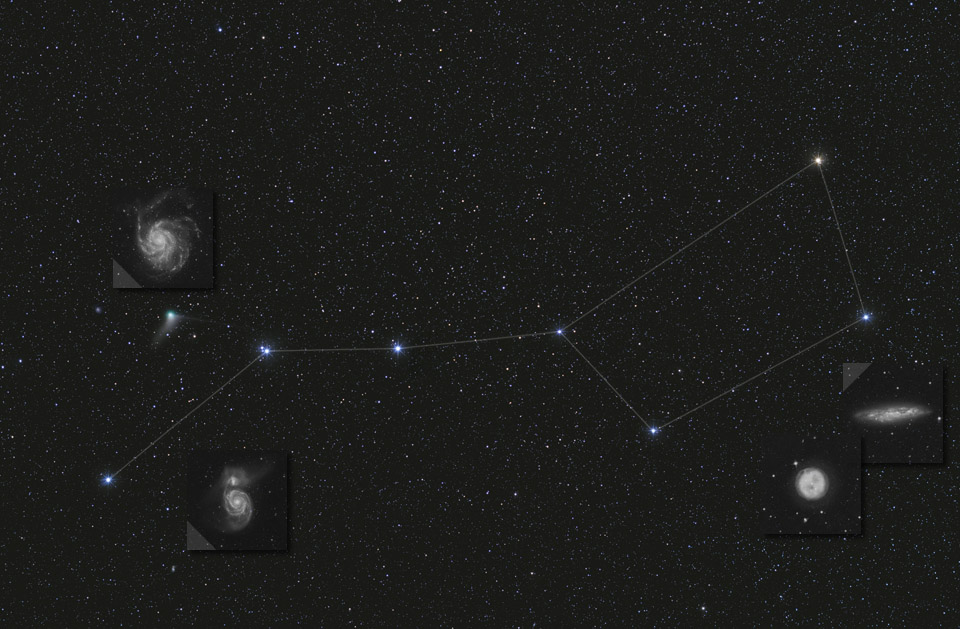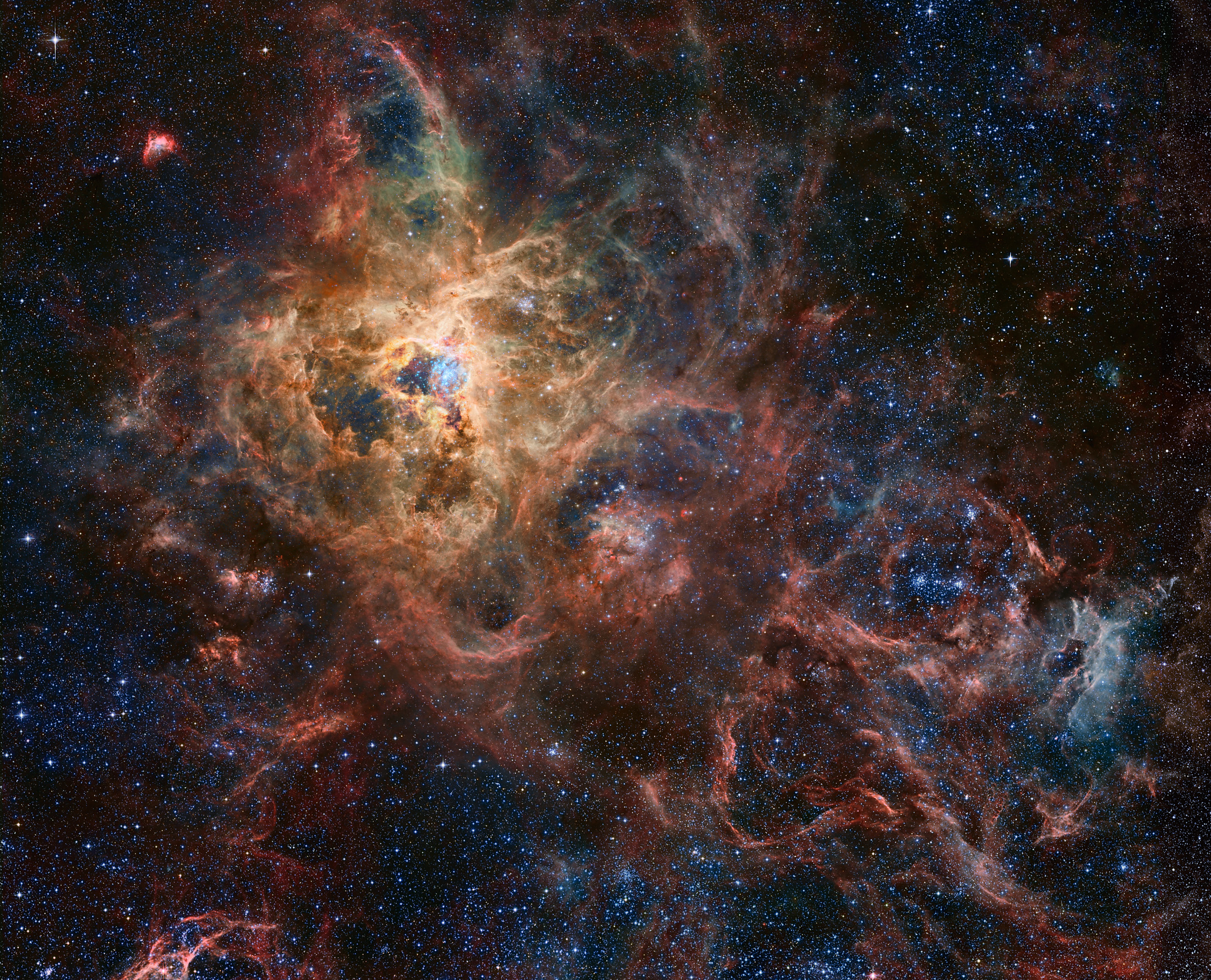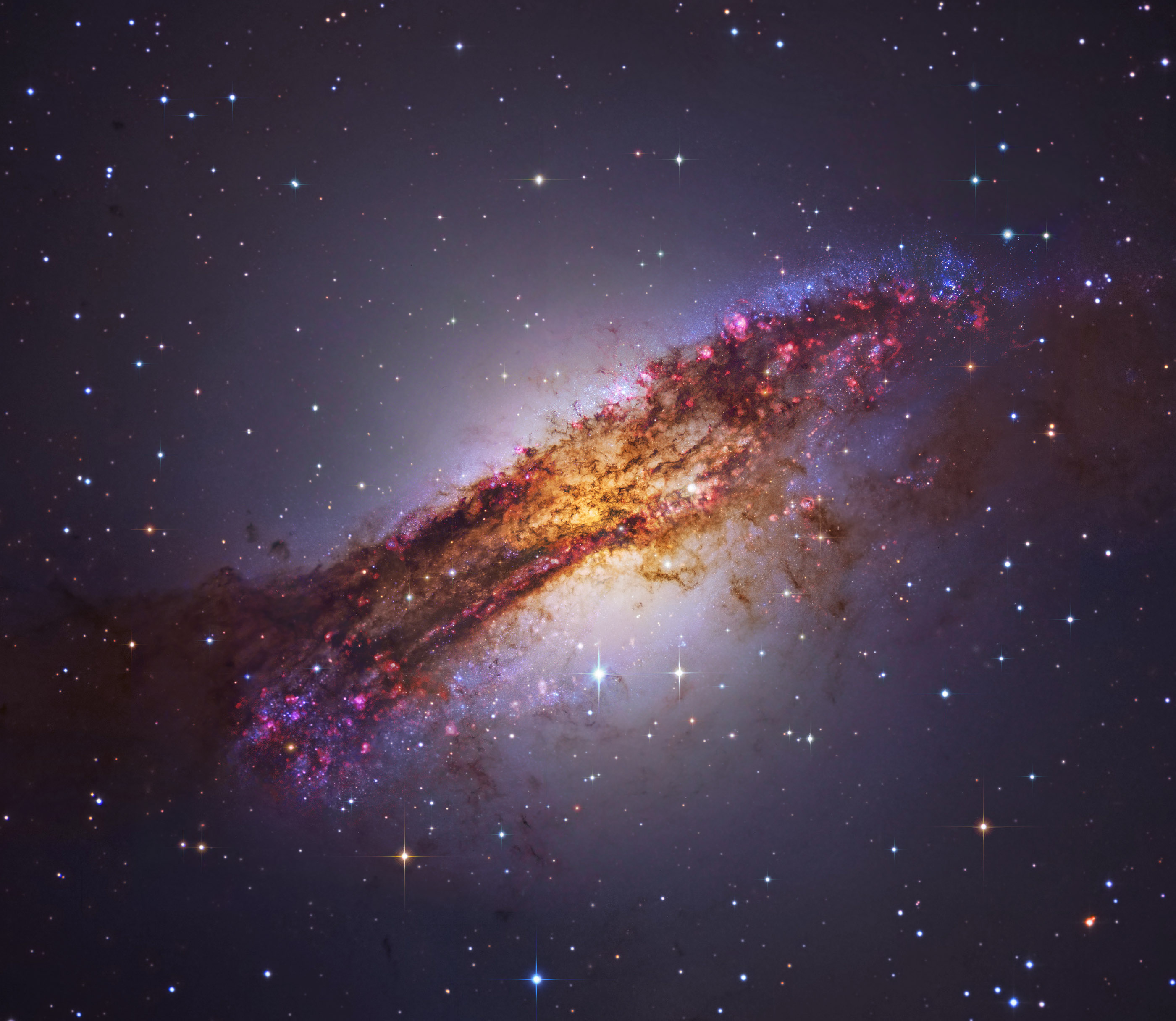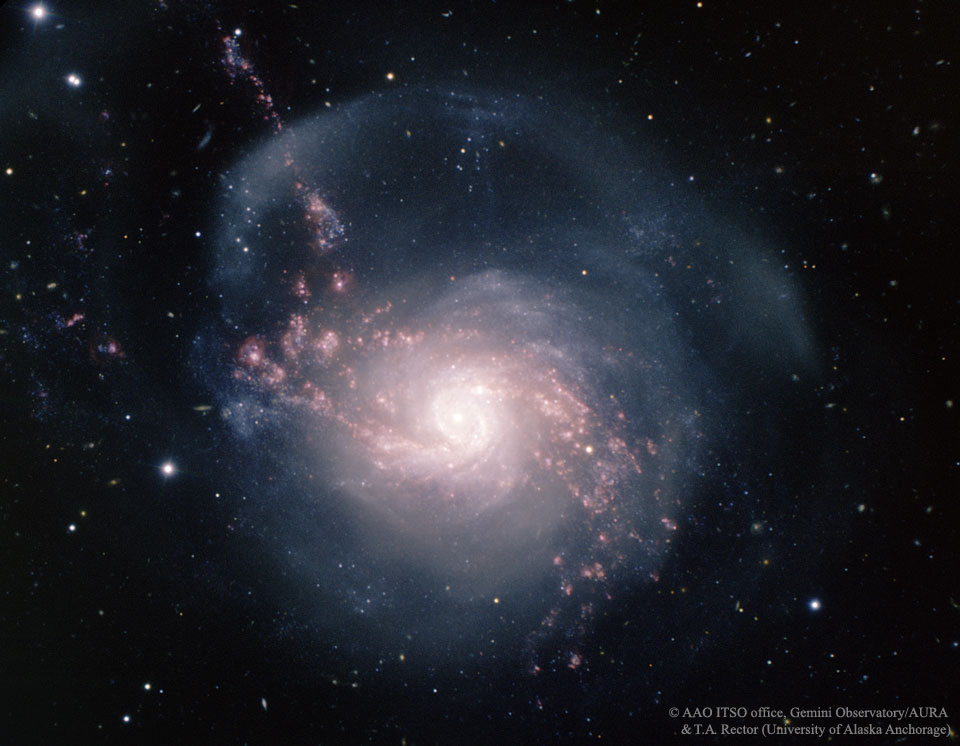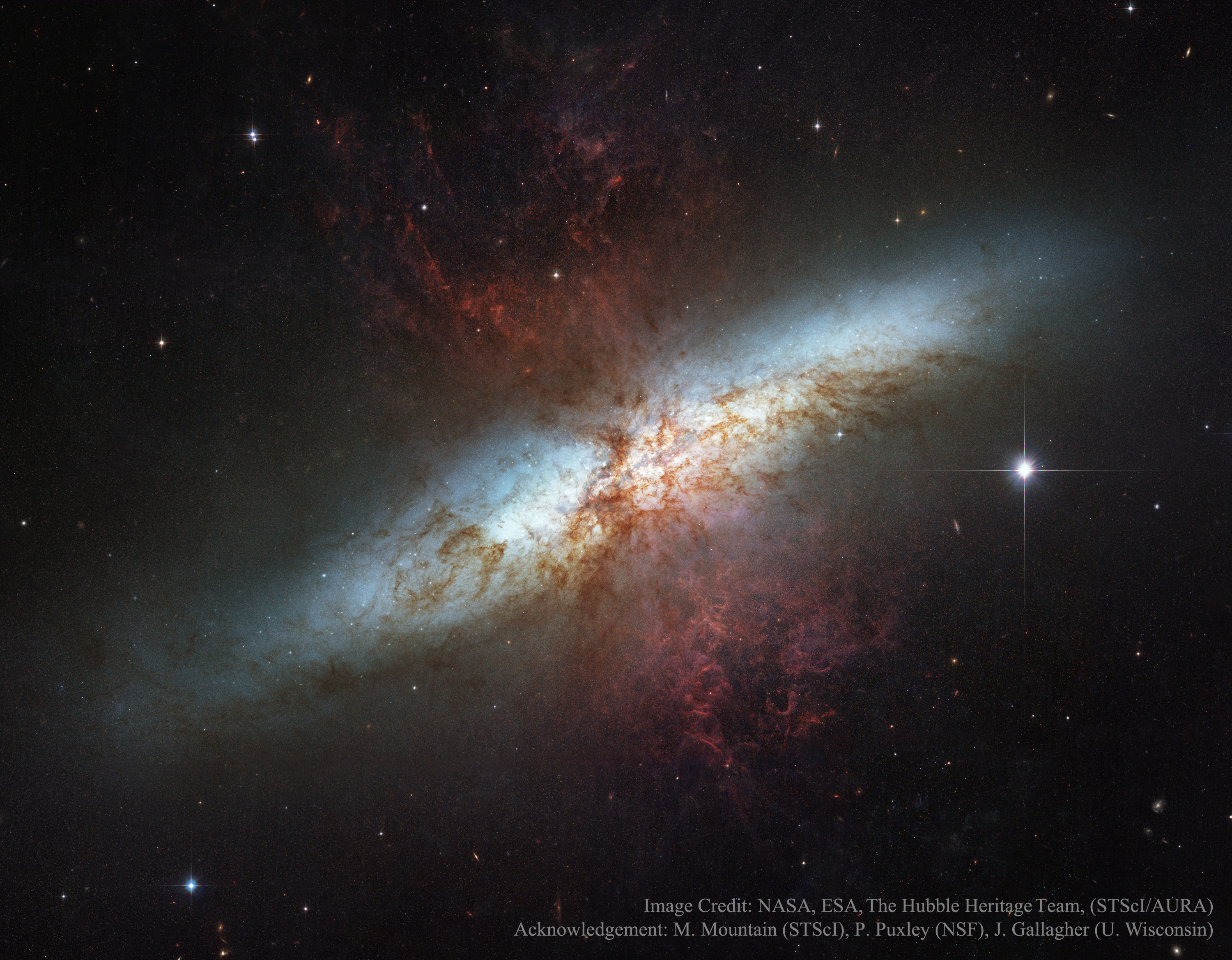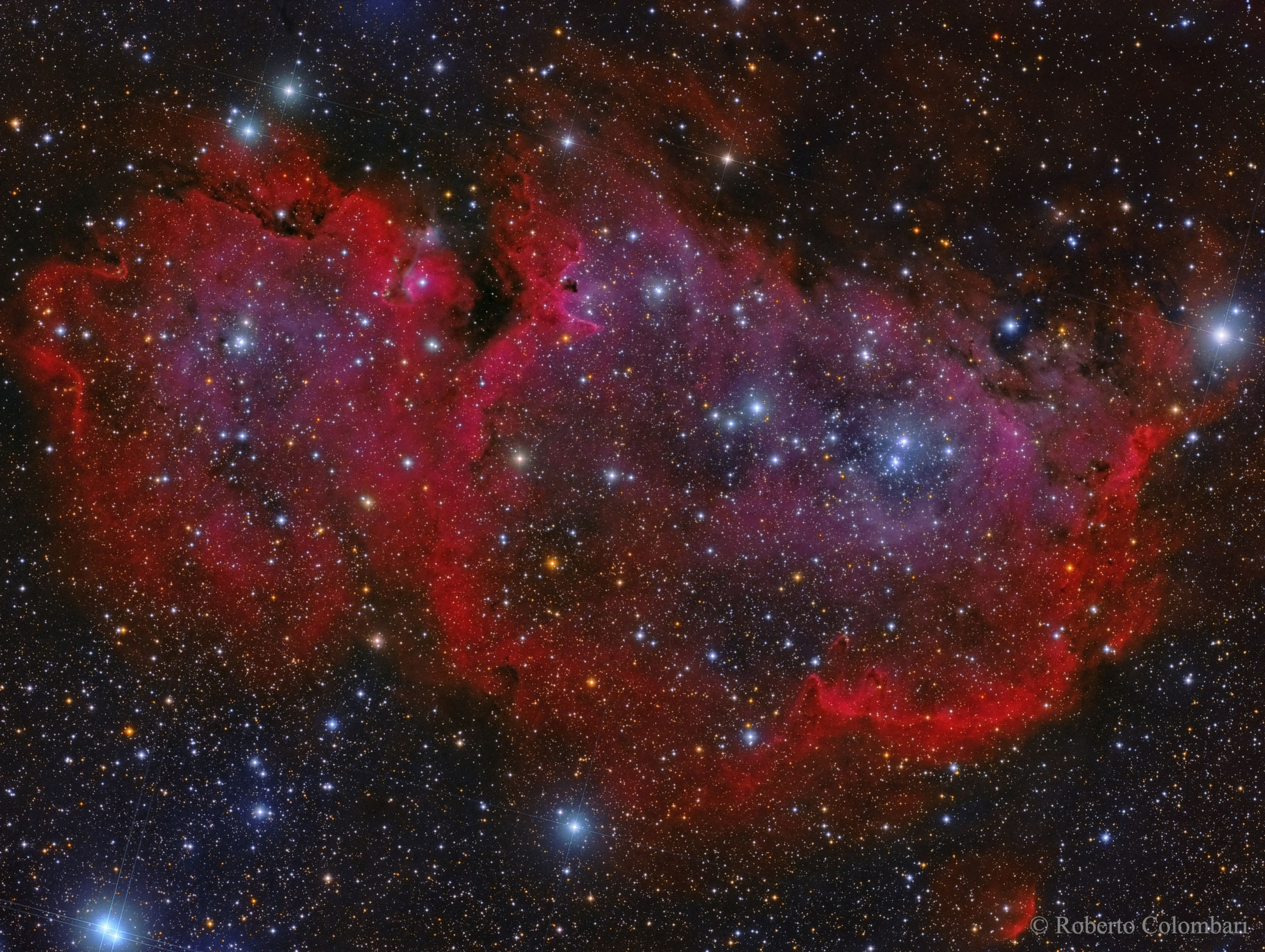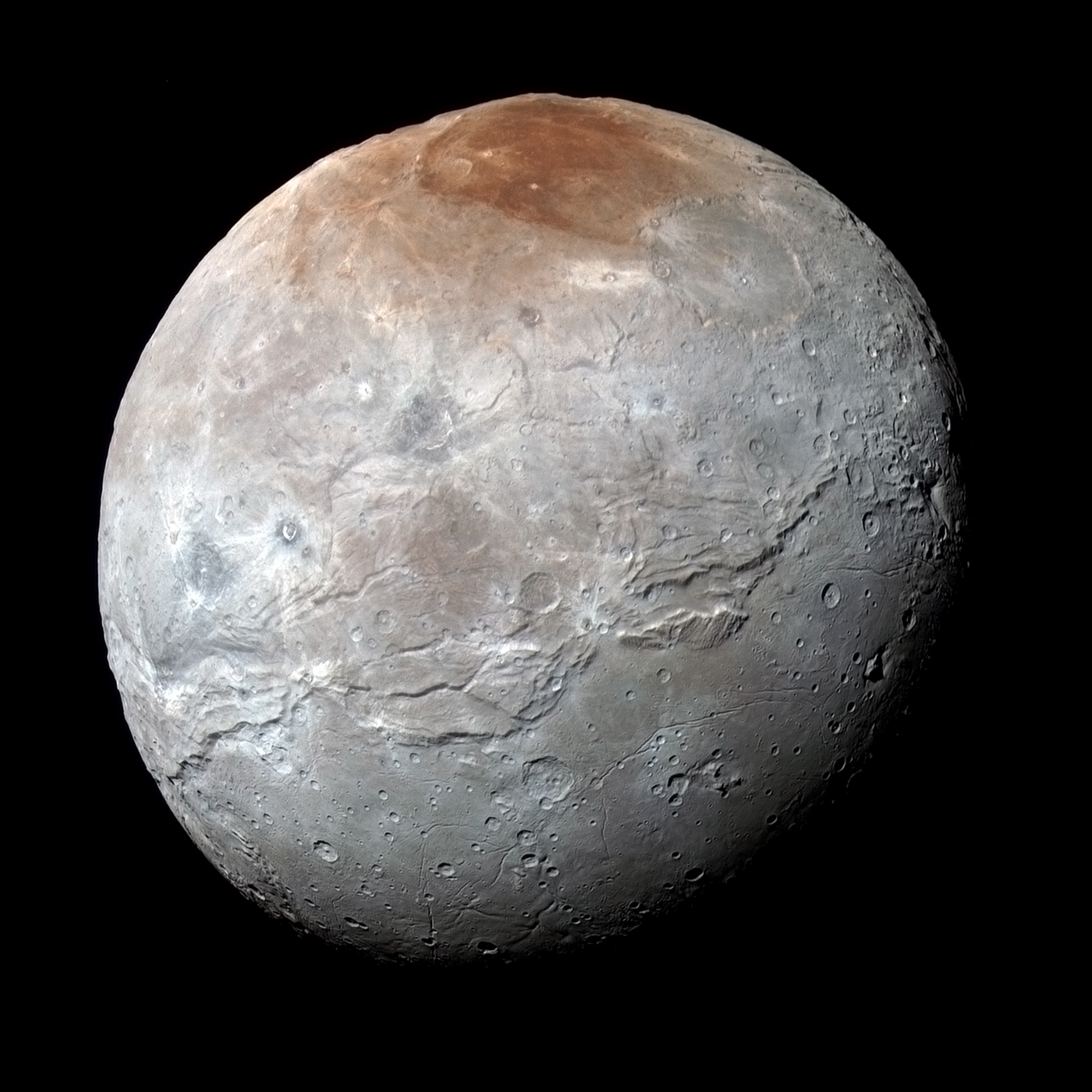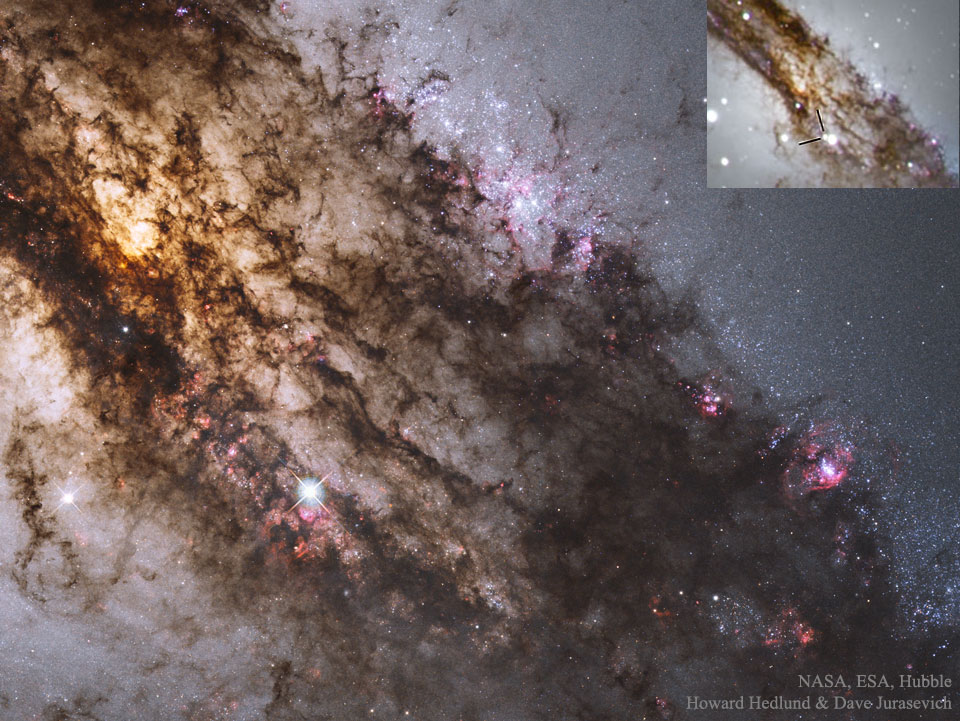I'll be traveling to Austin for about the next seven days, so here is a bonus image for next week.
The
Tarantula Nebula (also known as
30 Doradus and NGC 2070) is an
H II region in the
Large Magellanic Cloud (LMC). It was originally thought to be a
star, but in 1751
Nicolas Louis de Lacaille recognized its
nebular nature.
The Tarantula Nebula has an
apparent magnitude of 8. Considering its distance of about 49
kpc (160,000
light-years), this is an extremely luminous non-stellar object. Its
luminosity is so great that if it were as close to
Earth as the
Orion Nebula, the Tarantula Nebula would cast shadows. In fact it is the most active
starburst region known in the
Local Group of galaxies. It is also one of the largest such regions in the Local Group with an estimated diameter of 200
pc. The nebula resides on the leading edge of the LMC where
ram pressure stripping, and the compression of the
interstellar medium likely resulting from this, is at a maximum.
30 Doradus has at its center the star cluster NGC 2070 which includes the compact concentration of stars known as
R136 that produces most of the energy that makes the nebula visible. The estimated mass of the cluster is 450,000 solar masses, suggesting it will likely become a
globular cluster in the future. In addition to NGC 2070, the Tarantula Nebula contains a number of other
star clusters including the much older
Hodge 301. The most massive stars of Hodge 301 have already exploded in
supernovae.
The closest supernova observed since the invention of the telescope,
Supernova 1987A, occurred in the outskirts of the Tarantula Nebula. There is a prominent
supernova remnant enclosing the open cluster
NGC 2060, but the remnants of many other supernovae are difficult to detect in the complex nebulosity.
This image consist of the following exposures:
- Ha filter: 43 x 300 seg ISO 800
- O3 filter: 33 x 300 seg ISO 800
- S2 filter: 30 x 300 seg ISO 800
https://lh4.***BROKEN***/-Uy27IYVfCq0/Vthxwc3z7PI/AAAAAAAAC4A/ZUrJw4Ui3x8/w1098-h709-no/Hubble%2B2070%2Bs.jpg



